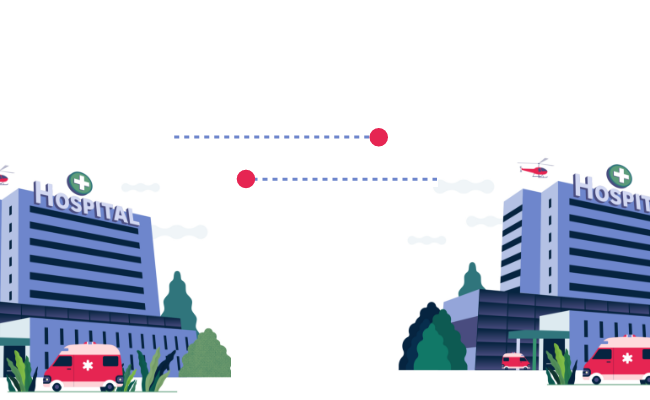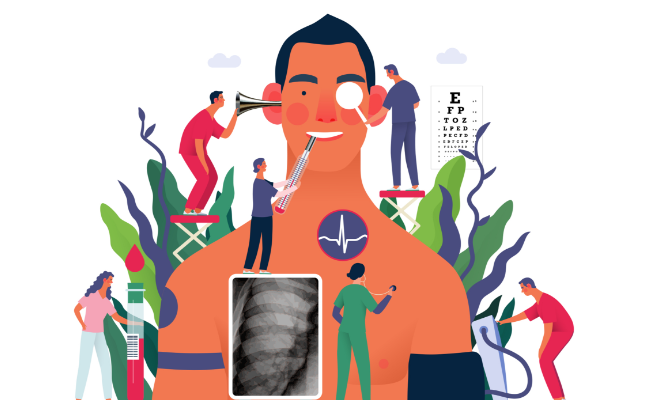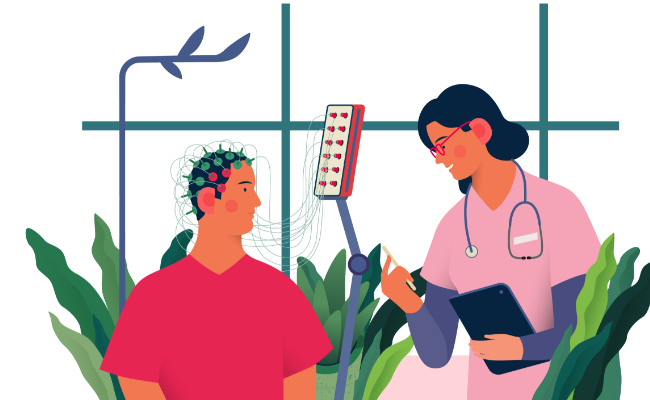Introduction
Chronic care management plays a crucial role in healthcare, especially for folks dealing with long-term conditions like heart disease, diabetes, and asthma. It’s all about giving these patients the ongoing support they need to avoid any complications and get better health outcomes. For people over 65, Medicare has a special program called Chronic Care Management (CCM) that aims to boost the quality of care for those living with two or more chronic illnesses.
For individuals battling chronic diseases, it’s vital to have continuous and tailored treatment plans. With chronic care management, the aim is to offer coordinated and proactive support tailored specifically for each patient’s needs. This includes everything from regular check-ups and making sure medications are right on track to planning out their care properly and teaching them how they can play an active part in managing their own health.
A big piece of making chronic care management work well is getting patients involved in their own treatment plans. When patients actively participate in decisions about their healthcare journey—armed with all necessary information—they tend not only feel better but also see real improvements in satisfaction levels regarding the service received from healthcare providers.

This involvement can be encouraged through different ways such as providing educational materials specific to patient needs ensuring there are always open lines of communication between doctors and patients, and promoting shared decision-making processes among others.
Understanding Medicare Chronic Care Management (CCM)
Medicare’s Chronic Care Management (CCM) program is all about helping people with two or more chronic conditions get better care. It aims to make sure these folks receive ongoing support from their healthcare teams, making it easier for different providers to work together.
For those who provide Medicare services, adding CCM can really make a difference in how patients fare and feel about their care. The idea is to offer thorough support that covers everything from regular updates to managing meds, planning out care steps, and teaching patients how to look after themselves. This approach helps keep the patient’s health stable over time and tackles any issues head-on before they become bigger problems.
With the CCM program, doctors and care givers team up with patients to come up with tailor-made treatment plans suited just for them. Through steady communication and routine check-ups on health status as well as medication reviews help catch potential issues early on. This kind of attentive management means fewer emergency room visits and better overall health for those dealing with long-term conditions.
Healthcare professionals looking into starting CCM services will find plenty of useful info on the official Medicare website. From what you need to qualify through how much you’ll be reimbursed – it’s all there along with educational stuff designed specifically for healthcare workers aiming at delivering top-notch chronic care management.
The Evolution of CCM in Healthcare
Over the years, Chronic Care Management (CCM) has really changed how we look after people with long-term health issues. The Centers for Medicare and Medicaid Services (CMS) have been at the forefront of this change, thanks to their Innovation Center.
With a focus on trying out new ways to provide care that not only helps patients get better but also cuts down costs, the CMS Innovation Center has been all about getting more CCM services out there. They’ve helped healthcare providers give top-notch care by encouraging teamwork among caregivers, making sure patients are actively involved in their own care, and using tech to make managing chronic conditions easier.
Across America, hospitals and clinics have taken up CCM’s ideas by putting together dedicated teams for patient care, setting up rules on how different caregivers should work together smoothly using electronic health records (EHRs), and adopting technology that keeps patients engaged while keeping an eye on their health status from afar.
Thanks to these efforts in evolving CCM within healthcare systems across the country; we’re seeing better results for patients including happier experiences during treatment as well as smarter use of medical resources. This shift towards looking after chronic illnesses before they become bigger problems represents a big step forward in ensuring everyone receives quality care focused on maintaining or improving overall health outcomes, achieving higher levels of patient satisfaction, underpinned by continuous innovation through centers like CMS’s Innovation Center. It highlights a commitment toward offering consistent high-quality service (quality of care) within our healthcare system supported strongly by entities such as CMS, along with programs related to both Medicare and Medicaid.
Key Benefits of CCM for Patients and Providers
Chronic Care Management (CCM) brings a lot of good stuff for both the people getting care and those giving it. For starters, patients see better health outcomes, feel happier with their care, and get top-notch quality in how they’re treated. With CCM, there’s a big focus on making sure everyone involved knows what’s going on with the patient’s health plan. This means folks dealing with long-term issues like heart disease can manage their condition more effectively. Plus, by looking at the whole person rather than just one symptom or problem at a time ensures that treatment plans are comprehensive.
Also, doctors and healthcare providers find things running smoother too. They get to work more efficiently thanks to well-thought-out care pathways and keeping patients engaged in their own care leads to better results all around. In essence, CCM makes personalized healthcare possible which really matches up with what each patient hopes to achieve for their health goals while ensuring continuity of care is maintained throughout.
The Role of Technology in Chronic Care Management
Technology has become a key player in making chronic care management smoother and improving how patients with long-term health issues receive their treatment. By bringing technology into the mix, healthcare workers have changed the game in keeping an eye on and handling patient health.
With this tech integration, those working in healthcare can get up-to-the-minute details about a patient’s well-being, keep tabs on how they’re doing, and step in right when needed. This approach is all about staying one step ahead of chronic illnesses and catching any new problems or shifts in someone’s health early on.
At the heart of managing chronic care through technology are electronic health records (EHRs). EHRs act as a single place where medical professionals can save and look up everything about a patient’s medical history. It makes it easier for different doctors to work together by sharing information smoothly, cutting down mistakes that happen from not having all the facts.
Besides EHRs, telehealth technologies have also stepped onto the scene as big helpers for people with ongoing health conditions. Telehealth lets doctors check-in on patients from afar through online visits or calls which means folks don’t always need to travel for care – saving time while still getting help when they need it most.
On top of that mobile apps related to your wellbeing along with gadgets you wear like fitness trackers are becoming more common tools too. They let individuals monitor important things like blood pressure or sugar levels at home; then share these insights directly with their doctors so everyone involved gets an accurate picture over time leading towards better-tailored treatments just for them based off real data collected day-by-day
In essence integrating technology within chronic disease management gives those providing your care more ways than ever before personalize what they do specifically tailored around each person’s needs – ensuring communication stays strong between everyone involved facilitating quicker interventions if necessary ultimately aiming toward improved health outcomes thanks largely due part careful care planning amongst teams across various aspects within our broader healthcare system
Advancements in HealthViewX CCM Platform
HealthViewX is a cutting-edge platform that brings new improvements to managing long-term health conditions, also known as Chronic Care Management (CCM). It was created together with the Innovation Center and aims to make chronic care management smoother and more effective.
With HealthViewX, healthcare workers can set up care plans that are customized for each patient. By focusing on what each person needs for their health goals, this system makes sure everyone gets care that fits them perfectly.
On top of this personalized approach, HealthViewX has cool features like automatic reminders for patients about their treatment and educational stuff to help them understand their condition better. These tools keep patients in the loop about their own health which helps them stick to their treatment plans better. This not only leads to healthier lives but also makes patients happier with the care they receive.
Moreover, through its data analytics feature, HealthViewx lets doctors keep an eye on how well treatments are working in real-time. They can see if there’s any problem early on and do something about it quickly because of these insights from patient data analysis.
So basically by using all these smart functions of the HealthViewX CCM platform – like making sure every bit of a patient’s care is coordinated properly; planning out treatments based exactly on what someone needs; giving people tools so they’re more involved in looking after themselves – healthcare providers can really step up how they manage chronic illnesses leading not just improved results but also making both doctors’ jobs easier and increasing happiness among those getting treated.
Integrating CCM Software with Existing Healthcare Systems
Merging Chronic Care Management (CCM) software into our current healthcare setups is key for smooth care coordination and making sure everything runs well. When we bring CCM software, like HealthViewX, together with electronic health record (EHR) systems, doctors and Care givers get a full view of patient info which helps them manage care better.
With interoperability being crucial here, it lets different healthcare systems and apps share patient data easily. This means that those in the medical field can see up-to-date and correct information about patients without having to punch it in by hand, cutting down on mistakes.
When CCM software gets hooked up with EHR systems, capturing details about chronic care management becomes automatic. Healthcare workers find it easier to keep track of what’s been done for patients and meet the rules for billing too.
By fitting CCM software into their usual ways of working (normal operations), healthcare providers make managing long-term illnesses a part of their day-to-day tasks. This makes coordinating care smoother improves how healthcare teams talk to each other, and ensures patients with ongoing conditions receive thorough proactive treatment.
Enhancing Patient Care with HealthViewX
HealthViewX plays a vital role in making patient care better by focusing on getting patients more involved and offering all-around care for those with long-term health issues. The platform is all about treating the entire person, not just their symptoms, and helps patients get actively involved in managing their own health.
With HealthViewX, involving patients in their treatment plans and decisions about their care is really important. By providing tools for learning about their conditions, reminders for treatments, and safe ways to talk to healthcare providers online, it encourages people to take charge of their health. This teamwork between patients and care providers makes everyone work together better.
On top of this, HealthViewX aims at giving complete care that looks after the physical as well as mental and emotional sides of a patient’s needs. Healthcare workers can make personalized plans that truly fit what each patient needs because they understand them fully through this platform. It helps keep everything organized so no part of a patient’s care gets missed out on ensuring they’re looked after from every angle.
By going beyond just medical help to consider things like whether someone has enough support at home or if they can easily get to appointments—what we call social determinants—it means HealthViewX lets healthcare teams give much more effective help tailored specifically around what might affect someone’s recovery or wellbeing outside the hospital too.
In essence, HealthViewX boosts how well people are cared for by encouraging them to be part of deciding how they’re treated while also coordinating thoroughcare across different areas needed for healing both body & mind; thus improving overall experiences with healthcare services.
Automated Patient Engagement Features
HealthViewX has some cool tools that help patients get better at taking care of their health, especially if they have long-term illnesses. They make it easier for people to learn about their health conditions and how to deal with them.
With HealthViewX, folks can find lots of easy-to-understand info and videos on different health topics. This helps them know more about what’s going on with their bodies and the choices they have for getting better. Knowing all this stuff makes it simpler for patients to take an active role in looking after themselves.
On top of teaching patients, HealthViewX sends out reminders so no one forgets when to take their medicine or go see the doctor again. These little nudges are super helpful in making sure everyone sticks to what the doctor suggested and keeps up with any checks that need doing before problems pop up. All this effort means fewer trips back into hospital beds and healthier lives overall.
By using these smart features from HealthViewX, people feel like they’re really being looked after well by those providing healthcare services which makes them happier about where they’re getting help from.
Comprehensive Care Coordination Tools
HealthViewX brings a bunch of really helpful tools to the table, making it easier for doctors and care coordinators to work together smoothly. With these tools, they can make sure patients with long-term health issues get their care without any hitches.
When dealing with chronic illnesses, coming up with a game plan tailored just for each patient is key. HealthViewX steps in by offering healthcare pros everything they need to craft these personalized plans. We’re talking about figuring out the right meds, setting up preventive actions, and guiding patients on how to look after themselves better.
For folks living with ongoing health problems, keeping their care consistent is super important. It means they should get steady and linked-up support no matter where they are treated. Through HealthViewx’s ability to let medical teams share info about patients easily collaborate on what needs doing next and keep an eye on how things are going helps dodge any lapses in treatment which makes everyone happier in the end.
Doctors using HealthViewX also have cool ways to talk securely among themselves quickly ensuring that updates or changes regarding someone’s condition or treatment plan don’t fall through cracks.
In essence this platform does wonders for improving teamwork among those looking after us enhancing communication along every step of way ultimately leading towards bettering both management of chronic conditions as well as overall health outcomes thanks its solid backing continuity planning coordination efforts all centered around creating effective individualized care plans within healthcare settings
Overcoming Challenges in Chronic Care Management
Taking care of people with long-term health issues is tough, and those who provide this care have to tackle some big hurdles to make sure they do a good job. Getting past these obstacles is key for bettering the health of patients and handling chronic conditions well.
For starters, dealing with chronic conditions isn’t easy because they can be complex and change over time. Doctors and care managers need to keep up with all the latest info on how best to treat these illnesses so their patients get top-notch care.
Then there’s making sure everyone gets fair treatment when it comes to managing their health problems. This means breaking down any barriers that might stop someone from getting the help they need, whether those are due to where they live, cultural misunderstandings or other life situations. It’s about giving every patient an equal shot at feeling better.
On top of that, having enough skilled people in healthcare is crucial for looking after folks with ongoing medical needs properly. This involves training staff well and making sure there are enough hands on deck ready to give personalized attention.
To deal with these challenges head-on, using tech tools like HealthViewX can really help by making it easier for doctors’ offices communicate better both among themselves as well as engaging more effectively With smart use of technology alongside teamwork in healthcare settings we can push through difficulties tied up in caring for individuals battling persistent ailments ensuring high-quality support across board
Addressing the Complexity of Chronic Conditions
Dealing with long-term health issues isn’t easy and needs doctors who really know their stuff to help manage everything properly. They have to tackle the special problems that come with each type of chronic illness so patients can get better.
Take heart disease, for instance. It’s a typical long-lasting problem where you need constant care and some changes in how you live your life. Doctors focusing on heart stuff need to keep an eye on things like blood pressure, help control cholesterol, and offer advice about what to eat and how much exercise is good.
With every chronic condition comes its own hurdles and potential complications. For healthcare providers, it’s crucial they’re always learning about new findings, guidelines, or ways of treating these conditions so they can give top-notch care.
When we talk about handling the tricky nature of chronic illnesses, it often means bringing together experts from different fields – think heart doctors (cardiologists), hormone specialists (endocrinologists), lung experts (pulmonologists) – working as one team gives someone dealing with more than one ongoing health issue the best support possible.
By digging into the unique challenges each chronic condition brings up front , medical professionals make sure everyone gets care that’s just right for them . Tools like HealthViewX are super helpful here because they let healthcare teams use proven guidelines , treatment plans ,and keep tabs on how patients are doing all in one spot.
Streamlining Care Coordination and Communication
To make sure people with long-term health issues get the best care possible, it’s really important for all parts of their healthcare to work smoothly together and talk well. Making these steps more efficient can help patients feel better and have a better experience.
With HealthViewX, doctors and other health workers can easily work together by using one place online to share information about patients and plan their care. This helps everyone involved in caring for a patient be on the same page, making sure they get exactly what they need when they need it.
Talking clearly with each other is super important in getting this right. HealthViewX has special tools that let doctors chat safely among themselves or even directly with you as a patient. This means less chance of mix-ups and makes coordinating your care much easier.
By improving how healthcare teams coordinate everything and communicate, we can avoid unnecessary trips to the hospital, make sure medications are taken correctly, and overall just make patients happier with their care. Technology like HealthViewX plays a big role in helping healthcare professionals do this effectively.
Implementing HealthViewX CCM in Your Practice
Starting to use HealthViewX CCM in your healthcare setup is pretty easy and comes with a lot of perks. With it, the first thing you do is look at what your practice needs and figure out how HealthViewX can make managing chronic care easier for you.
After choosing to go ahead with HealthViewX, the next move involves getting your medical team on board and training them well. The folks at HealthViewX have put together detailed training sessions so everyone gets comfortable using its features. This step makes sure they’re ready to handle chronic care management more efficiently, improving patient care significantly.
As part of setting things up, the team from HealthViewX will work hand-in-hand with yours to tailor-make their platform just right for what you need. They’ll help set up everything from specific care pathways tailored for different conditions, organizing plans of care, and even making sure it works smoothly with whatever electronic health records (EHR) system you already use. Their experts are there every step of the way ensuring everything meshes well without any hitches.
Once all that’s done, your medical staff can dive into using Healthview X full swing for managing long-term patient care. It’s designed user-friendly so navigating through patient details or keeping tabs on treatment plans becomes a breeze for them—plus staying connected with patients directly too! Adding remote monitoring into this mix means being able to keep an eye on how patients are doing in real-time which helps catch anything amiss early enough leading towards better results health-wise.
Steps to Integration and Deployment
To make chronic care management programs work well, healthcare places need to take careful steps. Here’s how they can do it smoothly:
- Before starting a chronic care program, it’s key to look at what the healthcare system is like now. Checking out the tech, ways things are done and where there might be problems helps figure out what needs to get better.
- With setting goals in mind for the program, you should know who you’re helping, what health results you want for them and how you’ll keep track of progress.
- Putting together a team that includes different kinds of health workers like doctors and care coordinators is crucial. They will work together closely to give patients with long-term illnesses all-around support.
- For everything to run without hitches between patients and their care teams technology must come into play. This means using electronic records systems or tools that let doctors check on patients remotely.
- Training everyone involved on how these new tech tools work along with understanding patient-centered approaches ensures your staff can offer top-notch service in managing chronic conditions.
- Keeping an eye on how well the program does by constantly checking if things are going as planned allows for tweaking bits here and there based on real outcomes seen in patients’ health improvements.
By sticking close to this plan, healthcare groups can bring about positive changes not just in managing long-term diseases but also making sure overall services become more efficient leading towards better health outcomes within our healthcare systems
Training Healthcare Staff for Maximum Efficiency
Training healthcare staff is essential for improving how they manage long-term illnesses. Here’s what works best when it comes to training:
- Start with creating detailed training programs that cover everything from coordinating care, getting patients involved, and using technology right. These should be customized based on whether someone is a care giver, doctor, or in charge of coordinating care.
- With hands-on sessions, let healthcare workers practice with tech tools, learn the steps of managing patient care better and interact effectively with patients. It boosts their confidence and skills in handling chronic illness management.
- By promoting an environment where learning never stops: Push for ongoing education by offering access to workshops and conferences about managing long-term health conditions. This keeps everyone up-to-date on new methods and practices.
- Through mentorship: Pair up less experienced staff with mentors who’ve been there before to help them get through early challenges smoothly. Learning from those who have experience builds assurance in their roles.
- Checking if the training actually worked: Keep an eye on how well these programs are doing by asking for feedback from the team regularly. Use this input to make your training even better over time.
By focusing on thorough training plans while supporting continuous growth within teams at all times can really empower them; making sure they provide top-notch services related specifically towards caring for people dealing with chronic diseases which leads directly towards enhancing patient experiences overall.
Measuring Success with HealthViewX CCM
Measuring success is essential in chronic care management to evaluate the effectiveness of the program and make data-driven improvements. HealthViewX CCM offers a comprehensive range of key performance indicators (KPIs) to monitor and assess various aspects of the program. Some key KPIs to consider include:
- Patient satisfaction: Measure patient satisfaction through surveys and feedback to gauge their experience with the chronic care management program. This can help identify areas for improvement and enhance patient engagement.
- Health outcomes: Track health outcomes such as disease management, hospitalizations, emergency room visits, and overall quality of life. This data can provide insights into the effectiveness of the program in improving patient health outcomes.
- Cost savings: Measure the cost savings achieved through the implementation of the chronic care management program. This includes reductions in hospital admissions, emergency room visits, and overall healthcare costs.
- Care coordination efficiency: Evaluate the efficiency of care coordination by monitoring metrics such as the average time between care team communication, response time to patient inquiries, and the number of care team members involved in the coordination process.
- Adherence to care plans: Assess the extent to which patients adhere to their care plans and treatment recommendations. This can be measured through medication adherence rates, appointment attendance, and participation in self-management activities.
By regularly monitoring these KPIs, healthcare organizations can assess the success of their chronic care management program and make data-driven decisions to improve patient outcomes and overall program effectiveness.
Key Performance Indicators (KPIs) to Watch
When setting up a program for managing long-term health conditions, it’s crucial to keep an eye on certain indicators that show us how well the program is working and if it’s really helping people get better care. Here are some important things to watch:
- Patient satisfaction: By using surveys and getting feedback, we can find out what patients think about their experience with this special care plan. This helps us see where we need to do better and make sure patients feel involved in their own care.
- Health outcomes: We should look at how well diseases are being managed, how often people end up in the hospital or emergency room, and if there’s any improvement in their overall quality of life. Understanding these aspects gives us clues about whether our efforts are making a real difference in improving patient health.
- Care coordination efficiency: It’s also key to check how smoothly everything runs when different healthcare professionals work together for a patient’s care. This includes looking at things like how quickly team members communicate with each other, respond to patients’ questions, or involve various specialists as needed.
- Adherence to care plans: Lastly, seeing if patients follow through with their treatment plans tells us a lot too. Are they taking their medications as prescribed? Showing up for appointments? Taking part in activities that help them manage their condition themselves?
By keeping track of these areas—patient happiness with the service provided; actual improvements in health; smooth teamwork among caregivers; and whether folks stick with recommended treatments—healthcare providers can spot ways to get even better results from programs designed specifically for chronic illness management.
Success Stories and Case Studies
Success stories and case studies are really helpful in showing us how well chronic care management programs work, especially when it comes to making patients happier and healthier. Let’s look at a couple of examples:
- In the first example, someone with diabetes joined one of these programs and saw big improvements in controlling their blood sugar. This meant they needed less medication and had fewer health problems because of it. They felt better about their healthcare experience overall.
- The second story is about an older person dealing with more than one long-term illness like heart disease and arthritis. Thanks to the program, they got better at managing pain, sticking to their meds, and didn’t have to go to the hospital as much. They ended up feeling more satisfied with their care.
These examples show that by focusing on coordinating care properly and using technology smartly, healthcare providers can make a real difference in improving both patient satisfaction and health outcomes for people living with chronic illnesses.
Future of Chronic Care Management
Looking ahead, the way we manage long-term health conditions is set to change thanks to new trends and tech advancements in healthcare. Here’s what might happen:
- With telehealth getting a big boost from COVID-19, it looks like it’ll become even more popular for managing chronic illnesses. It lets patients check in with their doctors without leaving home, which can make a huge difference.
- On top of that, artificial intelligence (AI) and machine learning are starting to play a big role. They could make things easier by sorting through patient info automatically. This means doctors could get helpful insights on how best to treat someone’s illness much quicker.
- Wearable gadgets like smartwatches are also going to be key for keeping an eye on people’s health day-to-day. These devices gather up all sorts of health data continuously which helps medical professionals know when they need to step in.
- For everything to work smoothly together – from hospital records systems sharing information easily will be crucial so everyone involved has the full picture when making decisions about treatment plans or care strategies.
- Lastly, giving patients control over their own healthcare is becoming increasingly important too; this includes providing them with personalized care routines and educational content that encourages them actively participate in looking after their well-being.
By taking advantage of these developments and focusing on technology within healthcare settings there’s real hope for bettering outcomes for those dealing with chronic issues while also boosting overall satisfaction levels among patients through improved education efforts around self-care practices
Emerging Trends in Healthcare Technology
In the healthcare world, there’s a lot of new tech popping up that’s changing how we look after people with long-term health issues. Here are some key trends:
- With remote patient monitoring, doctors can keep an eye on your health through wearable gadgets and other technology from afar. This means they can catch any problems early and tailor your care just for you.
- Thanks to artificial intelligence (AI) and machine learning (ML), computers can go through tons of health records to spot patterns. This helps predict future health issues so you can get ahead of them.
- Through telehealth and virtual care, you don’t always have to visit the doctor in person. You can chat with them online or over the phone, which makes getting advice much easier.
- When it comes to sharing your medical info between different places where you’ve received care, that’s where electronic health record (EHR) interoperability comes in handy. It ensures everyone looking after you is on the same page.
- Lastly, there are cool tools out there designed to get patients more involved in their own care like apps and websites where you can learn about your condition (patient education) or talk directly with healthcare pros.
By jumping on board with these tech trends,healthcare organizations not only make managing ongoing illnesses smoother but also help improve how well treatments work for everyone overall.
Predictions for CCM Evolution
The way we manage long-term health care, known as chronic care management (CCM), is set to change the healthcare industry in big ways. Here’s what might happen with CCM down the line:
- With a focus on meeting each person’s unique needs, preferences, and health goals, CCM will offer personalized care plans. This means using data from patients themselves, applying AI technology for better insights, and making sure patients are really involved in their care.
- In terms of working together more effectively, we’ll see teams made up of different healthcare experts coming together to give all-around and detailed support for people living with ongoing health issues. By having primary doctors work closely with specialists and other medical staff members.
- When it comes to getting paid for services provided, value-based reimbursement will take center stage; this pays more attention to how well patients do (health outcomes) and how happy they are (patient satisfaction) rather than just paying for each service given out. Programs that show they can make people healthier while also saving money will get extra benefits under these new payment models.
- Making sure patients play an active role in their treatment is going to be crucial too. There’ll be a push towards using tech tools that help individuals look after themselves better at home through things like keeping track of their condition remotely or learning about their health online.
- Lastly, data-driven decision-making will guide CCM programs even more by relying on thorough analysis and forecasting methods so caregivers can spot those who might need urgent attention sooner rather than later which helps tailor treatments perfectly.
As changes keep happening within CCM, it’s clear that focusing on tailored patient experiences, collaborative efforts, value recognition, personal involvement, and smart use of information are key steps toward improving life quality for those dealing with chronic conditions in the realm of healthcare.
Conclusion
HealthViewX has created a full package to make managing long-term health issues easier for healthcare providers. By using smart tech, it makes looking after patients better, keeps everyone connected automatically, and organizes services in a snap. With HealthViewX’s system fitting right into the current healthcare setups, tackling chronic conditions doesn’t seem so tough anymore. If you decide to use HealthViewX CCM at your place, you’ll see how well things start running together and how easy it is to keep an eye on progress with key performance indicators (KPIs). As we move forward with new trends and guesses about where healthcare technology is headed next, HealthViewX shines because of its standout features that meet Medicare standards too. Check out what making chronic care management smoother looks like with HealthViewX now.
Frequently Asked Questions
What Makes HealthViewX CCM Unique?
HealthViewX CCM really shines because of what it brings to the table. For starters, it fits perfectly with the electronic health record (EHR) systems that are already in place. On top of that, it meets all the Medicare rules and uses cutting-edge technology to make managing chronic care a lot smoother and more efficient.
How Does HealthViewX Support Compliance with Medicare Requirements?
HealthViewX has built its chronic care management platform with all the needed rules and guidelines to make sure it fits Medicare’s standards. This way, healthcare organizations that use HealthViewX CCM can be sure they’re doing everything right to get reimbursed by Medicare.
Can HealthViewX CCM Integrate with Other EHR Systems?
Indeed, HealthViewX CCM is built to work smoothly with different electronic health record (EHR) systems. By doing this, it makes sure there’s easy sharing and connecting of data. This way, healthcare organizations can keep using their current EHR setups but also take advantage of the sophisticated capabilities that come with HealthViewX CCM.
Key Highlights
- Taking care of people with long-term health issues is super important in healthcare. This kind of care makes sure these patients get all the help they need.
- With Medicare, there’s a special program for Chronic Care Management (CCM) that helps improve how well people with two or more chronic conditions are looked after.
- For this type of care to work best, it’s crucial to make sure patients are really involved in their own treatment plans and decisions about their health.
- When done right, managing chronic conditions can lead to better results like fewer trips to the hospital and doing a better job at keeping illnesses under control.
- Using technology smartly is essential for making chronic care management smoother. It lets doctors keep an eye on how their patients are doing more easily, stay in touch with them, and step in quickly when needed.
- HealthViewX is a cool tool that brings new improvements to looking after folks with long-term health problems. It has features that automatically reach out to patients and tools that help manage everything about their care.













